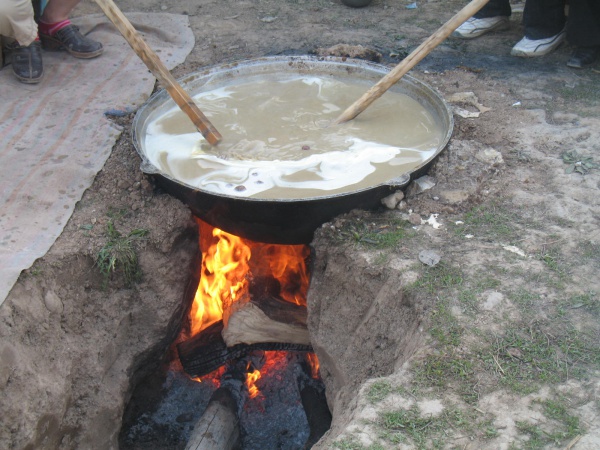Facts About Kazan
A kazan, sometimes spelled qazan, is a large cooking pot that is particularly popular in regions such as Central Asia, Azerbaijan, Turkey, and the Balkan Peninsula. This versatile cookware is commonly used for preparing a variety of delectable dishes including plov, sumalak, shorpa, kesme, and bawyrsaq. Kazans are available in different sizes, typically determined by their capacity, and are often crafted from cast iron or aluminum. They are especially practical during celebrations when large quantities of food are required to accommodate numerous guests.
Traditionally, a kazan is suspended over a fire using metal frames or positioned in a ground pit, allowing space for a fire underneath. Smaller kazans can be used on stoves with the aid of special metal supports that ensure even heat distribution and stability.
The term "kazan" means "the hollowed-out thing" in the Turkic language, and these pots were invented by Turkic nomads. They bear a resemblance to Chinese woks or Indian karahis in appearance but differ in shape and lack handles. In the Ottoman Empire, kazans held significant importance for janissary regiments; overturning a kazan was a symbolic act of protest against their leaders, which gave rise to the Turkish phrase "Kazan devirmek" meaning mutiny.
Additionally, there are a couple of places named after kazan. One is Gazandjyk (or Kazandzhik) in Turkmenistan, which translates to "little cauldron" or "small pot." The other is Kazan, the capital and largest city of the Republic of Tatarstan in Russia.

 Kazakhstan
Kazakhstan